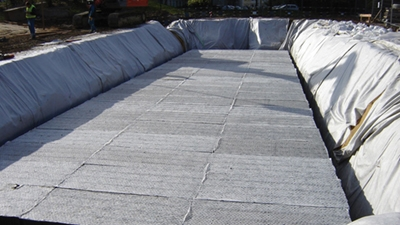As part of the prevention of floods, Nidaplast brings stormwater management solutions, and favors the so-called alternative, innovative and sustainable techniques, from the ground to the roof. These new alternative techniques will allow for the control of all stormwater and runoff from landscaped areas in the networks thanks to an ultra-lightweight honeycomb structure (ULS).
In urban stormwater management, alternative techniques are now mature and reintroduce the great water cycle into the city. Despite their many amenities and responses to the expectations of civil society, they are still underemployed to the great displeasure of a scientific community that is working to make them flourish.
Stormwater management is becoming a citizen necessity. It is applied within a precise regulatory framework, relating to the preservation of groundwater and surface water bodies (Guide de la ville et de son assainissement (CERTU), Guide des SAUL en assainissement collectif pluvial (LCPC, CERTU - 1998, recast of IFSTTAR guide - 2011))
The soil sealing, climate change and the geographical imbalance of rainwater resources are renewing the old management of stormwater. It is once again becoming a resource that must be controlled.
Save space and free up land
Stormwater recovery is often associated with large, open-air stormwater basins, usually near highways or major roads. But in urban and suburban areas, land is often expensive and floor space is limited.
Nidaplast's honeycomb blocks address these issues.
Honeycomb blocks for stormwater storage and retention
The honeycomb blocks nidaplast EP or nidaflow benefit from high compressive strength. Once buried, the storage modules can be used to create parking lots, logistics platforms, access roads, green spaces...
During heavy rainfall, runoff water is then captured by drains connected to the buried basin and thus stored in the modules or infiltrated into the natural environment.
With its nidaplast EP, nidaflow EP, AZbox and nidaroof product ranges, Nidaplast answers all the problems of optimized management of water stormwater:
- storage of stormwater,
- stormwater discharge with limited flow and reduced vortex.
- infiltration,
- treatment, depollution and/or stormwater reuse.

